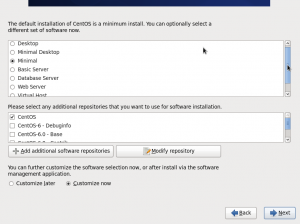Monitoring DRBD resources with Zabbix on CentOS
We use DRBD at work on several CentOS 5.x nodes to replicate data between our two computer rooms (in different buildings but linked with Gigabit fiber). It's true that you can know if something wrong happens at the DRBD level if you have configured the correct 'handlers' and the appropriate notifications scripts (Have a look for example at the Split Brain notification script). Those scripts are 'cool' but what if you could 'plumb' the DRBD status in your actual monitoring solution ? We useZabbixat \$work and I was asked to centralize events from differents sources and Zabbix doesn't support directly monitoring DRBD devices. But one of the cool thing with Zabbix is that it's like a Lego system : you can extend what it does if you know what to query and how to do it. If you want to monitor DRBD devices, the best that Zabbix can do (on the agent side, when using the zabbix agent running as a simple zabbix user with /sbin/nologin as shell) is to query and parse/proc/drbd . So here we go : we need to modify the Zabbix agent to use Flexible User Parameters, like this (in /etc/zabbix/zabbix_agentd.conf …

